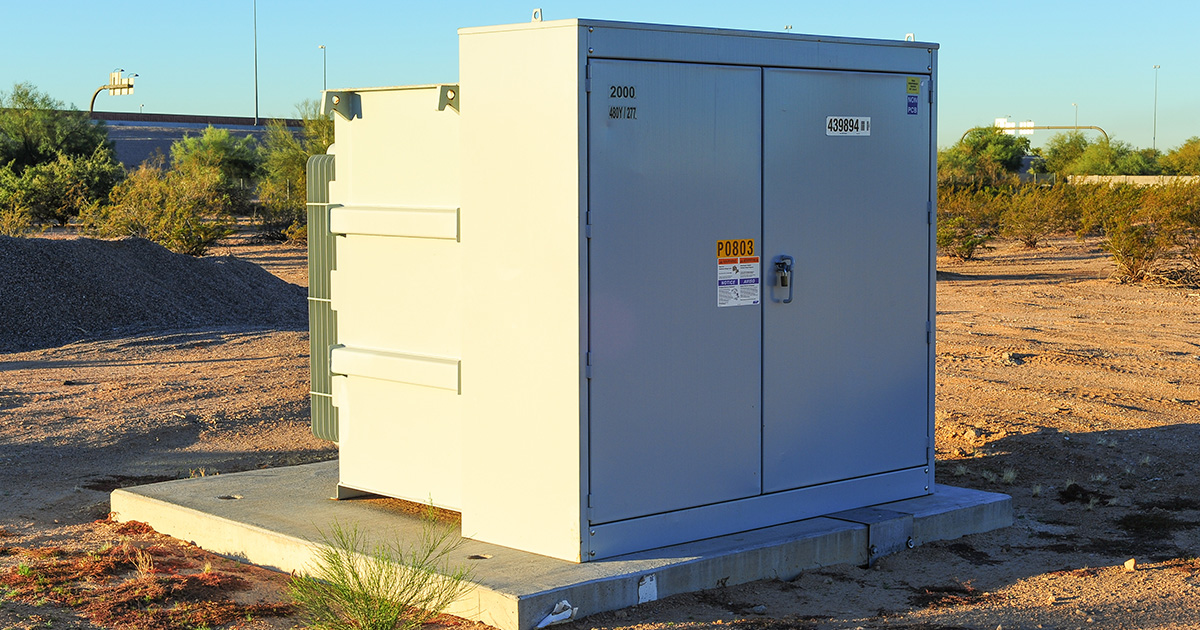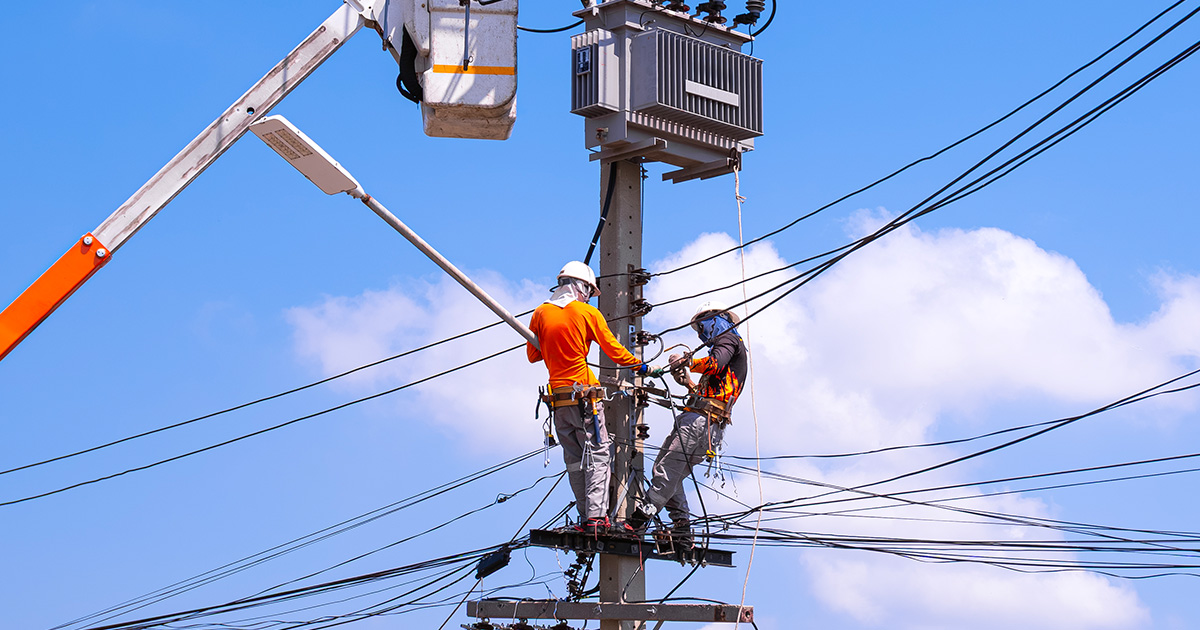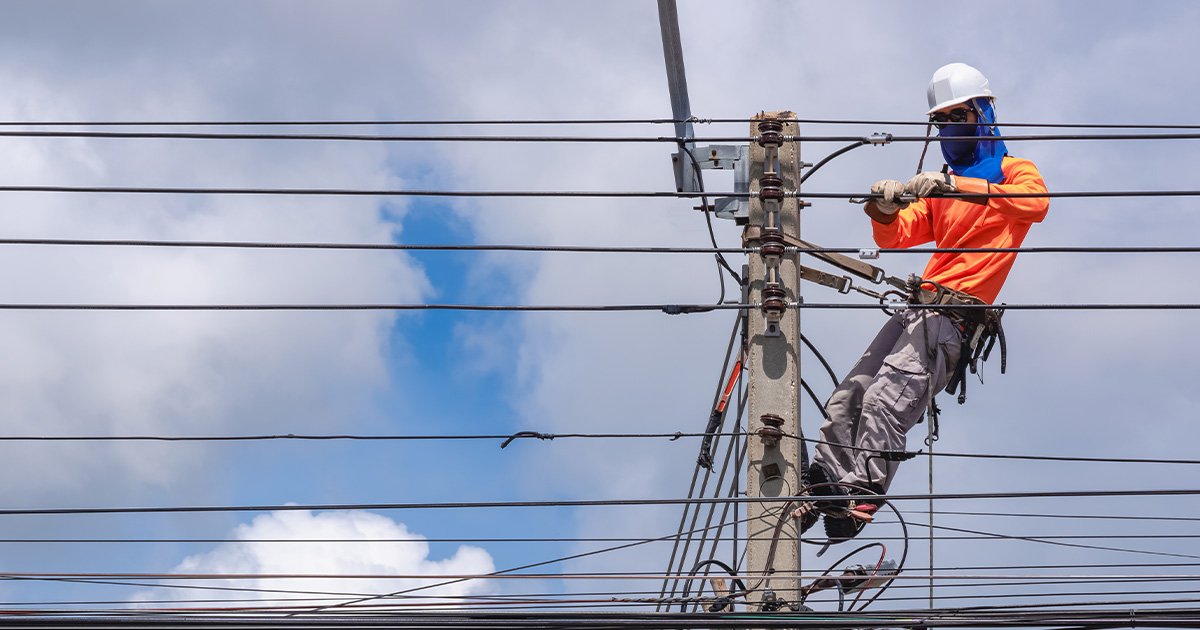0
Need help?
Customer satisfaction is our priority. Whether you have questions about our sustainable containment solutions, need help with an order, or require assistance finding the right product for your needs, we’re here to help.
Customer satisfaction is our priority. Whether you have questions about our sustainable containment solutions, need help with an order, or require assistance finding the right product for your needs, we’re here to help.
Pad mount transformers are critical components of modern power distribution systems. Installed in residential neighborhoods, commercial developments, and public facilities, these ground-level units help safely deliver electricity while remaining accessible for maintenance. Like any piece of equipment, however, transformers eventually age or fail. When this happens, utilities face the challenge of replacing them without interrupting power to customers.
One of the most significant risks during replacement is a transformer oil leak. These oils, which provide cooling and insulation, can contaminate soil, water, and air if not properly contained. Older transformers may even contain polychlorinated biphenyls (PCBs), which are considered hazardous waste. For this reason, utility transformer replacement must be carefully planned, executed with specialized equipment, and performed in compliance with environmental regulations.
This guide explores how utilities can replace pad mount transformers without service disruption, addressing key questions about preventing oil spills, containing leaks during removal, and staying compliant with PCB rules.
 Understanding the Risks
Understanding the RisksWhen a pad mount transformer leak is detected, utilities must act quickly to limit damage. Oil spills can result from cracked seals, corrosion over time, storm damage, or physical impacts from vehicles or construction. These incidents may start small but can rapidly escalate if oil reaches soil, groundwater, or storm drains. Once oil spreads, remediation becomes expensive and time-consuming. Leaking transformers also create potential hazards for workers and the public, particularly if the oil is flammable or contains polychlorinated biphenyls (PCBs). Beyond environmental risks, unmanaged spills can lead to regulatory penalties and increased liability for utilities.
The first step in preventing spills is thorough containment planning before any work begins. Crews must arrive prepared with certified containment products to address leaks immediately. Containment bags, which fully enclose transformers, are particularly effective for capturing oil during lifting, staging, and transport. FlexTrays are valuable for catching smaller drips, while berms establish a secure perimeter to prevent spreading contamination.
Utilities should also consider site-specific risks. In urban areas, oil may flow across pavement into drains, while in rural areas, it may seep directly into soil. Weather is another critical factor—rain or snowmelt can accelerate oil migration, spreading contamination into water systems. Planning containment around these conditions ensures that no oil escapes into sensitive areas.
In some cases, the safest strategy is transformer oil removal before replacement. Specialized pumps and sealed containers allow crews to extract oil from the pad mount transformer in a controlled manner. This significantly reduces the risk of accidental spills during lifting and transport. Once extracted, the oil is sent to approved facilities for recycling or disposal, depending on whether it contains PCBs. This step not only improves safety but also streamlines the process of handling the transformer shell.
While spill prevention is critical, utilities must also ensure customers experience minimal disruption during transformer replacement. Careful coordination allows for the use of temporary equipment or rerouting of power to maintain service continuity. By balancing containment with operational planning, utilities can replace leaking transformers efficiently, protect the environment, and keep communities reliably powered.
Proactive containment strategies, oil removal when necessary, and strong planning for uninterrupted service ensure that pad mount transformer replacement is handled safely, compliantly, and with minimal impact on customers.
 Transformer Containment Bags
Transformer Containment BagsWhen dealing with leaking transformers, containment bags are among the most effective and widely used solutions available to utilities. These heavy-duty bags are designed to fully enclose a transformer, creating a sealed barrier that captures oil during lifting, staging, and transportation. In the event of a power pole transformer leak or pad mount transformer leak, containment bags ensure oil does not escape and spread onto soil, sidewalks, or streets. By keeping contaminants inside the bag, utilities reduce the risk of soil remediation, storm drain contamination, and costly regulatory violations.
Containment bags are engineered to meet strict environmental and safety standards. Their durability allows them to withstand the weight of the transformer and any residual oil inside the unit. They are especially valuable for transformer utility pole units or electric pole transformer removal, where leaks are difficult to control without full enclosure. For PCB transformer removal, certified containment bags provide an added level of compliance, ensuring that hazardous waste remains fully secured until it reaches an approved disposal facility.
While containment bags capture larger leaks, portable FlexTrays and berms provide additional layers of protection. FlexTrays can be quickly deployed beneath transformers during staging, disassembly, or oil draining operations. These trays are flexible enough to be used on uneven ground and sturdy enough to contain ongoing drips.
Berms complement FlexTrays by creating a perimeter around the work area. If a transformer oil leak occurs during handling, the berms act as a barrier, preventing oil from flowing into storm drains, landscaped areas, or nearby roadways. When used together, FlexTrays and berms minimize the spread of oil, reduce cleanup efforts, and help crews manage unexpected leaks on-site.
Transformer oil removal often requires specialized pumps designed for safe extraction. Crews use these pumps to carefully draw oil from leaking transformers and transfer it into certified containers. These containers are specifically engineered to hold hazardous liquids and are required by regulations to be labeled accurately, especially if PCBs are suspected or confirmed.
The sealed containers prevent secondary leaks during transport and ensure that oil can be taken safely to recycling or hazardous waste facilities. This step is crucial not only for compliance but also for ensuring that oils from utility transformer replacement projects are managed responsibly.
Protecting workers is just as important as containing oil. Personnel who handle leaking transformers or perform transformer oil removal must be equipped with proper safety gear, including gloves, respirators, goggles, and protective clothing. Training ensures workers understand how to deploy containment bags, set up berms, operate pumps, and respond swiftly if unexpected spills occur.
Safety measures also extend to protecting the public. Barriers, cones, and warning signs should be used to restrict access around a work zone where transformer oil leaks are being managed. This prevents accidental exposure and ensures compliance with occupational and environmental standards.
Without certified containment tools, the risks associated with transformer oil leaks increase dramatically. Uncontrolled spills can contaminate soil and water, require extensive remediation, and create liabilities for utilities. For PCB transformer removal, the consequences are even more severe, as improper handling of hazardous oils may lead to long-term contamination and regulatory penalties.
By investing in certified containment bags, FlexTrays, berms, pumps, and safety equipment, utilities not only comply with strict environmental regulations but also demonstrate a clear commitment to environmental stewardship and community safety. Proper containment equipment transforms what could be a high-risk task into a controlled, compliant process that safeguards workers, protects the environment, and ensures that utility transformer replacement is performed responsibly and efficiently.
 Understanding PCB Regulations
Understanding PCB RegulationsPolychlorinated biphenyls were once considered highly valuable for transformer applications because of their chemical stability, insulating capability, and fire resistance. These characteristics made them a common choice for electric pole transformers, telephone pole transformers, and pad mount transformers. However, over time it became clear that PCBs posed significant dangers to both human health and the environment. Studies linked them to cancer, liver and kidney damage, immune system suppression, and reproductive disorders. In addition, their chemical stability meant that once released into the environment, PCBs persist for decades, contaminating soil, water, and wildlife. Because of these risks, PCB transformer removal today falls under strict oversight from agencies such as the EPA in the United States, as well as international regulatory frameworks including TSCA, DOT, and UN standards.
Before beginning any replacement or removal project, utilities must identify whether the transformer in question contains PCB oils. Many transformers installed prior to the late 1970s are likely candidates. Even if labels are missing or difficult to read, oil sampling and analysis provide definitive confirmation. Equipment records can also help determine whether PCB oils were used. Until test results are available, any leaking transformer from this era should be considered hazardous and handled accordingly. Proper identification not only prevents accidental exposure but also ensures compliance with regulations. The Guide To Identifying And Managing Leaking Utility Transformers offers further direction on spotting potential risks and planning safe removal strategies.
Once identified, PCB transformers must be removed with containment systems in place. Certified containment bags fully enclose transformers to capture oil, while FlexTrays and berms provide secondary safeguards during staging. Transformer oil removal may be required before transport, with all extracted oils placed in sealed, labeled containers. Because PCB oils are classified as hazardous waste, only licensed carriers are permitted to transport them, and disposal can only occur at approved facilities. Detailed documentation, including chain-of-custody records, is required for each step to demonstrate compliance and protect utilities from liability.
Unlike mineral or synthetic transformer oils, PCB-contaminated oils cannot be recycled through conventional methods. They require specialized treatment, typically high-temperature incineration or chemical breakdown processes, at licensed hazardous waste facilities. These methods destroy PCB molecules and prevent them from re-entering the environment. Utilities that bypass these processes or attempt improper disposal face severe penalties and long-term reputational harm. By working only with approved disposal facilities, utilities demonstrate environmental responsibility and align with the highest compliance standards.
While containment and compliant disposal are critical, the most effective long-term solution lies in proactive utility transformer replacement. Phasing out older transformers that may still contain PCB oils greatly reduces the risk of future leaks and environmental harm. Modern equipment is designed with safer insulating oils, reducing toxicity risks while improving performance and reliability. By scheduling replacements before failures occur, utilities protect communities, maintain regulatory compliance, and prevent the costly consequences of PCB-related incidents.
Through proper identification, safe containment, compliant removal, and proactive replacement, utilities can manage PCB risks effectively while meeting environmental and public safety obligations.
Replacing a pad mount transformer without service disruption requires more than emergency response—it requires preventive planning. Utilities should develop protocols that include:
Regular inspections to detect early signs of leaking transformers
Training workers in the use of containment products
Establishing relationships with licensed disposal facilities
Scheduling transformer oil removal when leaks are detected
Proactively replacing older equipment before failures occur
This approach ensures that transformer oil leaks are managed safely while also reducing the likelihood of unexpected service interruptions.
ABG Bag Inc provides certified containment products designed specifically for utilities managing leaking transformers and transformer oil leaks. Their solutions include transformer containment bags, FlexTrays, and berms that meet UN, DOT, TSCA, and EPA requirements. These tools allow utilities to safely handle electric pole transformers, telephone pole transformers, and pad mount transformer leaks without risk of contamination.
By partnering with ABG Bag Inc, utilities gain access to proven solutions for PCB transformer removal, transformer oil removal, and utility transformer replacement. Their products provide peace of mind by reducing environmental risks and ensuring compliance during every step of the replacement process. In addition, ABG Bag Inc offers guidance on best practices for deploying containment systems, helping crews respond quickly and effectively in the field. Their commitment to innovation and reliability makes them the trusted partner for utilities seeking safer, reliable, and more efficient transformer management solutions while also supporting long-term sustainability and regulatory compliance initiatives.
Replacing pad mount transformers without service disruption is possible when utilities prioritize both safety and compliance. Preventing oil spills, using certified containment equipment, and adhering to PCB regulations are all essential steps. By focusing on these strategies, utilities can protect communities, maintain reliable service, and minimize environmental risks.
For solutions that ensure safety and compliance during transformer replacement, Call (800) 758-8079 today to learn how ABG Bag Inc can support your operations.
Adding {{itemName}} to cart
Added {{itemName}} to cart